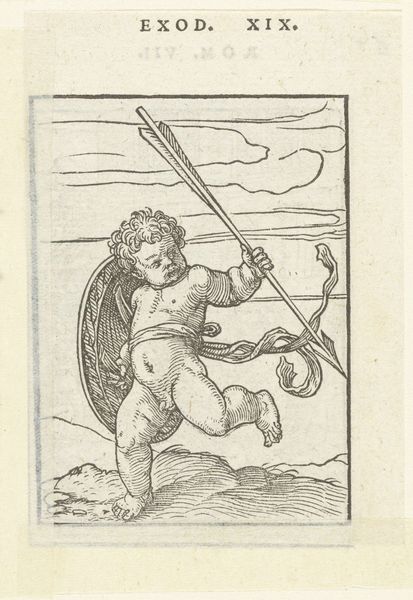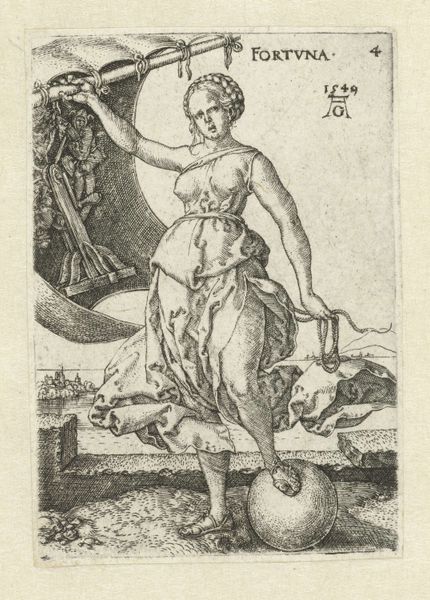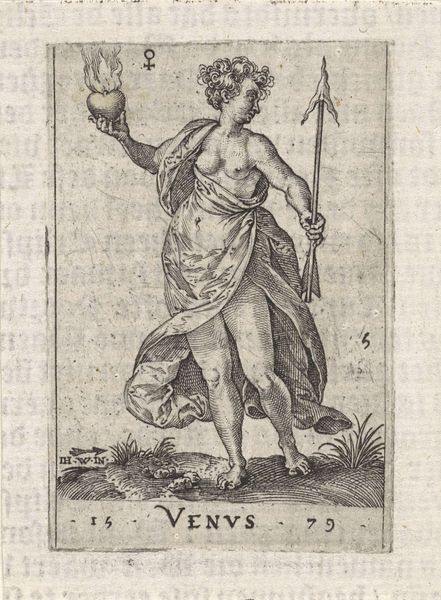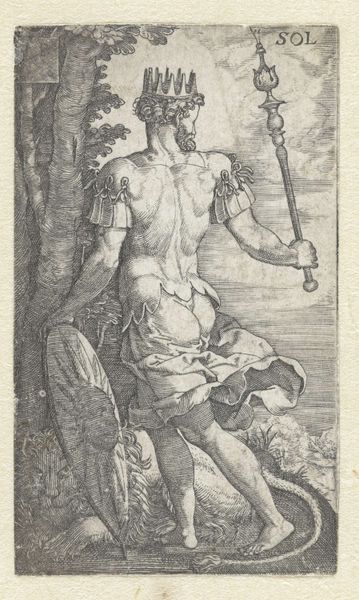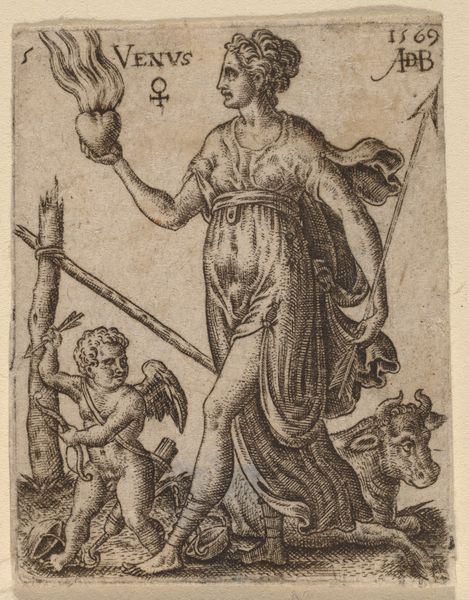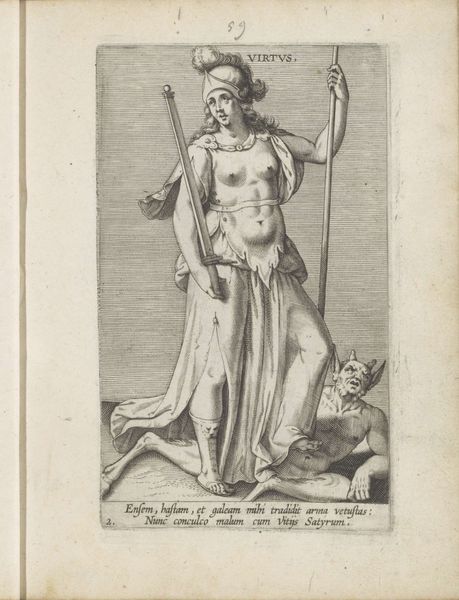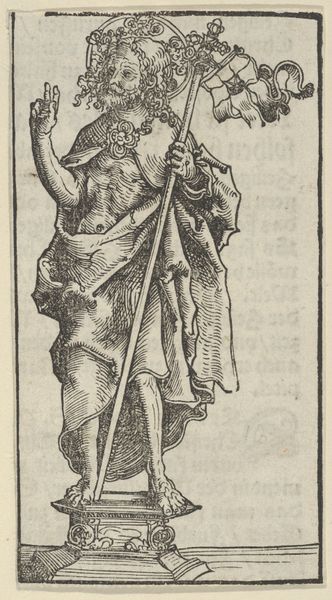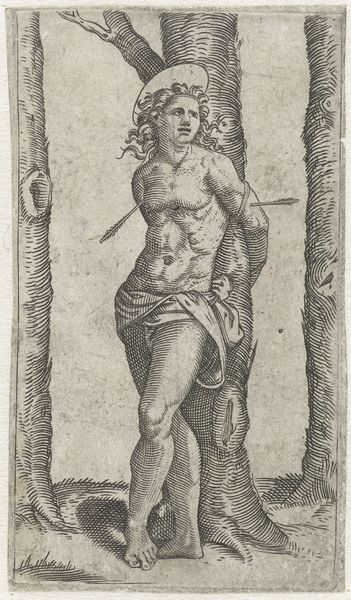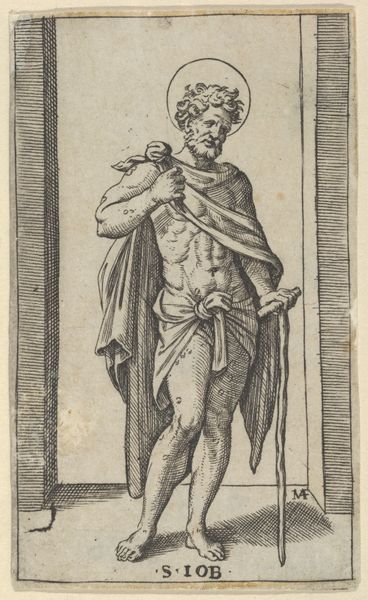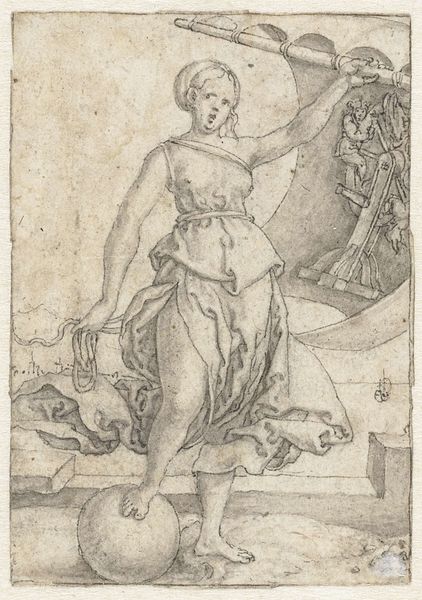
print, engraving
#
allegory
# print
#
mannerism
#
figuration
#
line
#
engraving
Dimensions: height 56 mm, width 38 mm
Copyright: Rijks Museum: Open Domain
Curator: We’re looking at “Luna,” an engraving by Wierix, dating somewhere between 1579 and 1609. It’s part of the Rijksmuseum's collection. My first impression? Striking composition. The lines, the posture…it's pure Mannerist elegance. Editor: The first thing I notice is the figure herself. She’s both classical and somewhat removed. What was the intention in producing it? Was it purely an artistic commission, or does it tie into broader themes of power and patronage from that era? Curator: Absolutely. Visually, consider the symbolism. Luna, the Roman goddess of the moon, holds the crescent aloft, a spear rests casually across her form... But for me, it’s all about that exquisitely rendered drapery; notice the shadows it casts! Editor: The drapery indeed gives clues to wealth and trade; Wierix and other artists like him had to consider the source of the patronage; engravings are inherently reproductive - this piece surely was circulated amongst specific groups. I'd ask - who was seeing this and where? Curator: A crucial question. Regarding the composition itself, though, observe how Wierix utilizes the engraved line. The fineness creates incredible detail, especially in Luna’s hair and the landscape at her feet. It's amazing what he could achieve with such limited materials! Editor: Materials do matter! But looking at the allegorical aspect – we see the moon goddess, an icon laden with cultural meaning. Think of her relationship to femininity, cycles, and nocturnal power in early European societies, the art served a socio-political role beyond simple decoration. It’s embedded with meaning. Curator: It's that embedding that gives it resonance, and even emotion, even now. But that fine linework-- I cannot help but find it captivating; it conveys the smoothness of the moon and the sensuality of her skin so expertly! Editor: It speaks of craftsmanship that absolutely reflects a social and economic stratum; that expertise allows meanings to proliferate in distinct ways. But perhaps more deeply – the relationship to other prints circulating simultaneously would be worth further investigation. Curator: Certainly more investigation is welcome. I will concede it's impossible to truly remove art from social and political themes when speaking of works that may touch a human experience. Editor: It’s all a mesh, that's how it all ties in and relates.
Comments
No comments
Be the first to comment and join the conversation on the ultimate creative platform.

